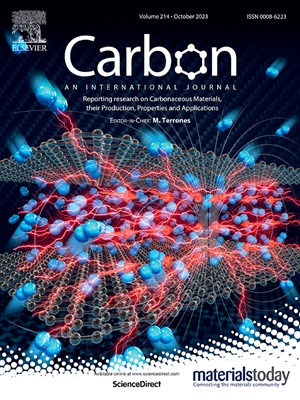Electrotunable superlubricity of two-dimensional ZIF-8
IF 10.5
2区 材料科学
Q1 CHEMISTRY, PHYSICAL
引用次数: 0
Abstract
Electric field control can actively, dynamically, and repeatably influence the interface friction behavior. The unique properties of two-dimensional (2D) ZIF-8 make it a promising lubricating material for electromechanical devices. The study on the electrotunable superlubricity of 2D ZIF-8 is carried out under longitudinal and transverse electric fields respectively, resulting in an order of magnitude variation in friction coefficient (μ: 0.0037–0.0124). Through the experiments and simulation, the regulation mechanism of electric fields on the lubricating properties of 2D ZIF-8 is attributed to the coupling effect of adhesion regulation and out-of-plane deformation regulation: The weakening of anchoring effect reduces the adhesion between probe and 2D ZIF-8; the tight binding of interfacial charge under longitudinal electric field as well as the increase in surface stiffness caused by lattice tension under transverse electric field, both restrain the out-of-plane deformation during friction. The electrotunable superlubricity of 2D ZIF-8 helps achieve rapid and flexible adjustment of the friction interface in electro-mechanical systems under charged conditions, illuminating the future development prospects for intelligent control.
二维 ZIF-8 的电可调超润滑性
本文章由计算机程序翻译,如有差异,请以英文原文为准。
求助全文
约1分钟内获得全文
求助全文
来源期刊

Carbon
工程技术-材料科学:综合
CiteScore
20.80
自引率
7.30%
发文量
0
审稿时长
23 days
期刊介绍:
The journal Carbon is an international multidisciplinary forum for communicating scientific advances in the field of carbon materials. It reports new findings related to the formation, structure, properties, behaviors, and technological applications of carbons. Carbons are a broad class of ordered or disordered solid phases composed primarily of elemental carbon, including but not limited to carbon black, carbon fibers and filaments, carbon nanotubes, diamond and diamond-like carbon, fullerenes, glassy carbon, graphite, graphene, graphene-oxide, porous carbons, pyrolytic carbon, and other sp2 and non-sp2 hybridized carbon systems. Carbon is the companion title to the open access journal Carbon Trends. Relevant application areas for carbon materials include biology and medicine, catalysis, electronic, optoelectronic, spintronic, high-frequency, and photonic devices, energy storage and conversion systems, environmental applications and water treatment, smart materials and systems, and structural and thermal applications.
 求助内容:
求助内容: 应助结果提醒方式:
应助结果提醒方式:


